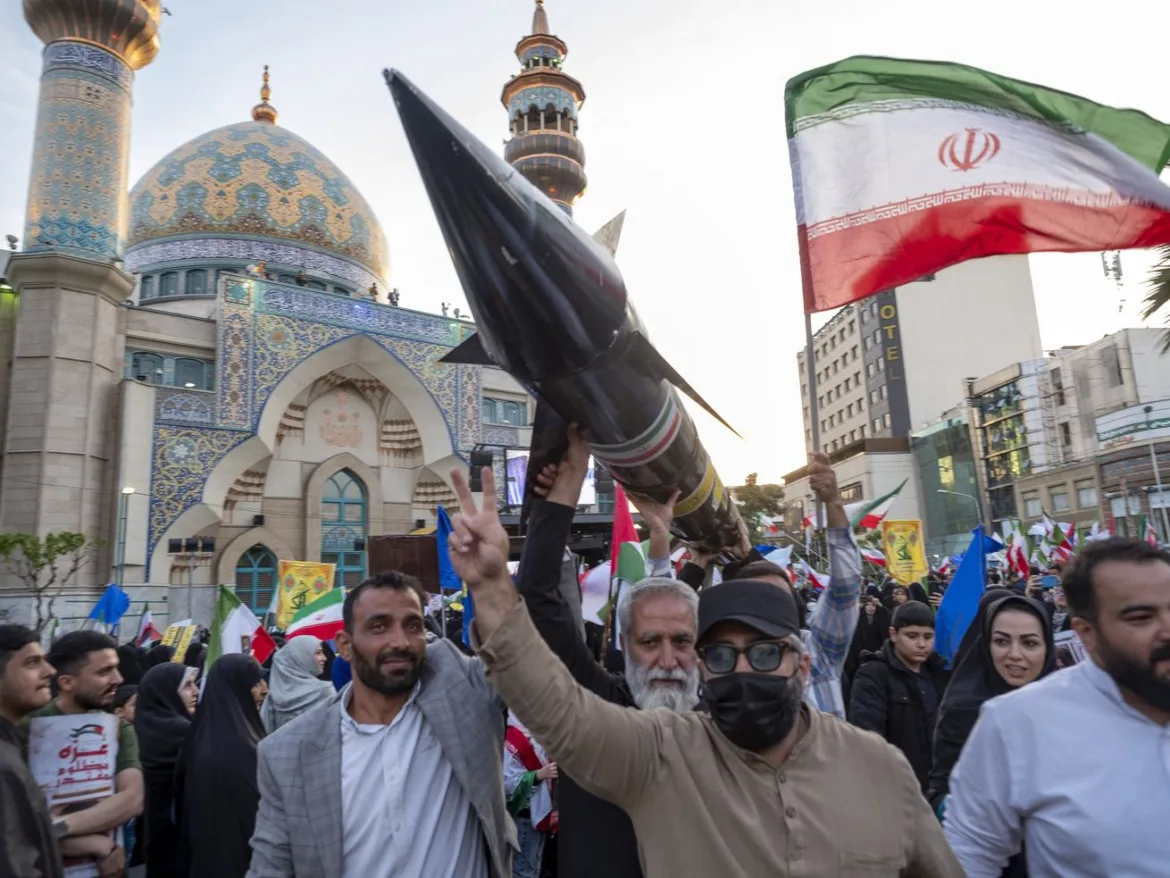Israel launched strikes in response to Iran’s retaliatory attack. Here’s what we know.
Israel carried out a strike against Iran on Friday but, for now, appears to have averted opening a dangerous new phase of the wider conflict in the Middle East.
Israeli drones reportedly struck near the central city of Isfahan Friday morning in retaliation for Iran’s assault on Israeli territory last week. Iran’s attack, which involved more than 300 drones and missiles, was itself a response to an Israeli strike on an Iranian diplomatic building in Damascus that killed several members of the Islamic Revolutionary Guards Corps (IRGC), including Gen. Mohammed Reza Zahedi.
The scale of Friday’s attack is still becoming clear; the Iranian regime reported that the offensive involved small swarms of drones, potentially launched from inside Iran, which targeted both Isfahan and the northern city of Tabriz. Israel, for its part, does not typically confirm military operations, but the US, Israel’s staunch ally, commented on the attack Friday, with US Secretary of State Antony Blinken insisting that the US military was not involved.
The tit-for-tat attacks risked major escalation between the regional adversaries amid the war in Gaza, in which more than 33,000 people have been killed since October, and in which ceasefire talks continue to stumble. That conflict has raised the temperature across the region, with Iraqi and Syrian militias attacking US military outposts in those countries and Yemeni Houthis attacking vessels and disrupting trade in the Red Sea.
Iran and Israel have long engaged in rhetorical — and physical — back-and-forth. But the direct attacks of the past few weeks have been different: Not only did they come amid a period of high tensions due to the war with Hamas, but both sides showed a willingness to cross lines they’ve shied away from previously, raising the limit of what’s acceptable in their decades-long conflict.
For now, Iran is downplaying the extent of the damage from the attack, and both Iran’s attack last weekend and Israel’s Friday seem to indicate a willingness to keep the scope of this particular tit-for-tat limited. However, there’s no clear offramp to ongoing tension, either, especially as ceasefire talks between Hamas and Israel continue to stall out.
A new phase in 40 years of hostilities
Israel and Iran once had close economic and strategic ties; Iran imported Israeli arms and Israel bought Iranian oil prior to the Iranian revolution in 1979. Both countries also had close ties with the US and prioritized fighting the Soviet Union and the spread of communism as part of their foreign policy, according to the US Institute for Peace.
The Islamic Revolution changed all that, since Shia hardliners saw Israel as an interloper in Muslim lands and the US as its enabler.
Now, “Israel and Iran have been engaged in a multidimensional cold war against one another for a long time,” Ali Vaez, Iran program director at the International Crisis Group, told Vox in October.
In recent years, there’s been an escalation in military operations, though more on the Israeli side than from Iran. “In the past few years, if you look at the covert operations Israel has conducted against Iran — and overt operations that it has conducted against Iranian personnel and assets in Syria — it really hasn’t [been] that much of a tit-for-tat,” Vaez said. Israel has waged cyberattacks against Iranian infrastructure, like the massive Stuxnet attack against Iran’s Natanz nuclear material enrichment facility and targeted assassinations of military commanders and nuclear scientists.
Groups affiliated with and to some degree directed by Iran — mostly Hezbollah in southern Lebanon and militant groups in Syria and Iraq — have engaged with both Israel and the US over the years, with Hezbollah trading rocket fire with Israel over the southern Lebanese border and Syrian and Iraqi militias targeting US military installations in those countries.
A new and different phase of hostilities began after the April 1 assassination of Zahedi and six other IRGC personnel in Damascus.
Zahedi had been an important leader in the Quds Force, which oversees the Iranian military’s coordination with Hezbollah, Syrian and Iraqi militias, the Houthis in Yemen, and Hamas in Gaza. Israel has targeted high-level Iranian officials before, but this attack was on an Iranian diplomatic site in the Syrian capital, which is supposed to be protected territory.
Iran launched its retaliatory attack last week, sending more than 300 drones and missiles toward sites in the Golan Heights and the Negev Desert, where a major Israeli air base and nuclear research facility are located.
That attack failed to do significant damage — US and UK air defenses, as well as the Israeli missile defense system and Jordanian forces, took out the vast majority of the projectiles. But it was notable for its scale and directness. Vaez told Vox last week, “The Iranians concluded that the risk of not responding outweighed the risk of responding.”
Hardliners within the Iranian government — a group Iran’s leaders are heavily dependent on amid weakening public support for the government — had publicly criticized the lack of response to multiple previous assassinations and escalatory actions attributed to Israel. With respect to Israel’s latest attack, however, it seems as though there’s no immediate response planned on Iran’s part. Iranian official sources refused to even pin the attacks on Israel in an interview with Reuters.
What happens now?
Iran cannot afford a full-on war with Israel and the US — and it certainly couldn’t win one.
“From what I’ve seen, Israel was trying to send a message without escalating,” Jon Alterman, Middle East director at the Center for Strategic and International Studies, told Vox. “And the message was, ‘You might be able to throw 300 missiles and drones at Israel, but we can shoot them all down, and we can penetrate all your air defenses, including some of your most sophisticated ones — and there’s nothing you can do about it.’”
But even if Iran doesn’t decide to retaliate and escalate, the overall bar for this conflict is now set higher. Cyberattacks and assassinations are no longer the status quo; drone attacks might be. “We’ve crossed the line of direct attacks on each other’s territory but not consequential attacks on each other’s territory,” Alterman said.
The increase in hostilities also increases the risk of miscalculation and misinterpretation, especially since Iran doesn’t have diplomatic ties with Israel or the US; those conversations go through intermediaries such as Oman, Qatar, and Switzerland.
Though the US has cautioned Israel that it would not engage in any response to last weekend’s attacks and has reportedly been insistent that any retaliation be measured and proportional, that’s different from using meaningful leverage to encourage Israel to de-escalate, Brian Finucane, senior adviser to the US program at the International Crisis Group, said.
“If the US is interested in de-escalating and preventing a wider war — which it has said since October — then it needs to factor in not just deterring adversaries, but reining in its partners.”



